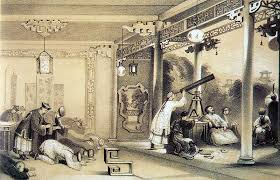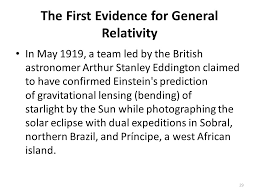Overview
During solar eclipses, more is revealed about the features in the sun’s corona. The corona is not normally visible to the naked eye, so scientists began studying it long before satellites were launched into space. In addition, observations during a solar eclipse brought important early proof of Einstein’s theory of relativity.
Ancient History of Eclipse Viewing
People have viewed solar eclipses throughout history. A megalithic monument in Ireland shows spiral carvings on rocks, called petroglyphs, which code the positions of the sun at various times. One of those may correspond to a total solar eclipse in 3340 BCE. In Ancient China, solar eclipses were thought to be predictions of doom to the Emperor who ruled at the time, and Chinese astrologers kept careful records of them. They thought that the sun was devoured by a huge green dragon that lived somewhere in the heavens. To scare away the dragon, the Chinese people beat pots and drums to make noise and scare away the dragon. In 2134 BCE, they described an eclipse in a phrase that translated as “the sun and the moon did not meet harmoniously.”
Predicting Eclipses
In Babylon, astronomers kept very careful records of the sun and moon’s position, so that they eventually used a mathematical formula to predict eclipses. Some of the eclipses they observed included one in 1063 BCE that “turned day into night”, and a famous one in 763 BCE, recorded by Assyrians in the ancient city of Nineveh. The ancient Greeks recorded eclipses as well as developing geometric predictions of when and where both lunar and solar eclipses would occur. By 200 CE, eclipses were a predictable scientific fact rather than an unpredictable sign of cosmic doom for much of the world.
Early Observations of the Solar Corona
The earliest observations of solar prominences were in 334 CE, and the corona was described 600 years later. By the 1700s, the corona was named as a crown around the sun, as part of the sun that could only be seen during the eclipse. The first wet plate photograph of a solar eclipse was taken in 1860, and many other discoveries followed.
Eclipses and Scientific Discoveries
A new line was found in the sun’s spectrum during an eclipse in 1868, and the chemist named it “helium” after the ancient Greek word for the sun, Helios. The element helium was not formally discovered on earth until 30 years later. On May 29, 1919, Sir Arthur Eddington carried out an experiment during the solar eclipse that was an early proof of Einstein’s theory of relativity. The positions of stars during the solar eclipse were carefully measured and compared with measurements of those same stars in their normal positions (not during a solar eclipse). Those careful measurements showed that space-time was warped by the gravity of the sun, exactly as predicted by Einstein’s equations. Eddington’s findings have been replicated in experiments elsewhere in the world, and scientists will also use the solar eclipse of August 21, 2017 as another opportunity to simulate his famous experiment, 98 years later.
Interested in science tutoring services? Learn more about how we are assisting thousands of students each academic year.
SchoolTutoring Academy is the premier educational services company for K-12 and college students. To learn more about how we help parents and students in Regina, SK, Canada: visit: Tutoring in Regina, SK




